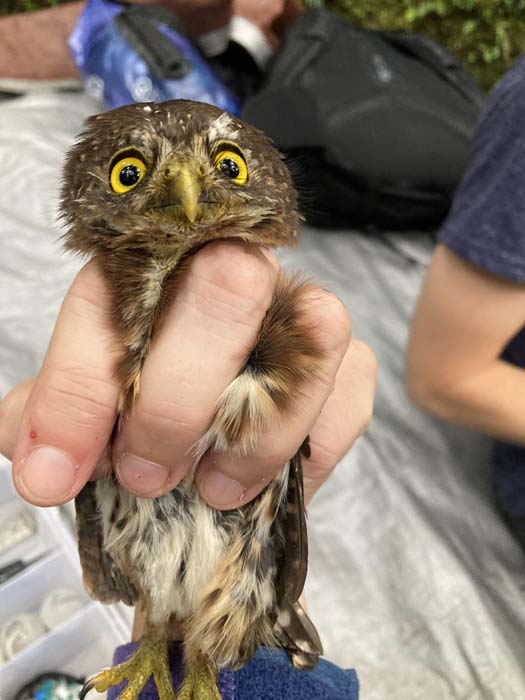Taking flight
Published 6:00 am Thursday, January 23, 2025

- Eastern Oregon University professor Laura Mahrt holds a rare cloud forest pygmy owl in Ecuador while on an eight-month sabbatical in 2024-25 to learn more about banding and tracking birds.
LA GRANDE — From the rainforests of Ecuador to the shores of the Galápagos Islands, Eastern Oregon University professor Laura Mahrt embarked on hands-on adventure in some of the world’s most biodiverse regions.
During eight months in 2024-25, she visited three countries, according to a news release from the university, working at bird-banding stations to deepen her expertise and connect EOU to global conservation efforts. She captured a rare pygmy owl, observed the courtship display of the club-winged manakin in Ecuador and earned certification to use cutting-edge telemetry technology to track migratory birds.
“It was exhilarating,” Mahrt said in the EOU report. “Being in these environments sharpened my skills and gave me a profound appreciation for the intricate beauty of these ecosystems.”
Mahrt’s bird-banding days often began before dawn. She grabbed a quick breakfast under the stars before slipping into rubber boots and hiking trails to the field station. By 6 a.m., she carefully opened the nets to gently capture birds. Each bird was meticulously measured, banded, and assessed for age, sex and health before being released.
“Every bird tells a story,” according to Mahrt. “Their health and movements are windows into larger environmental changes.”
One of the most thrilling moments came in Ecuador when Mahrt helped catch a rare cloud forest pygmy owl.
“Holding such an elusive species was unforgettable,” she said. “It reminded me how vital conservation work is for protecting biodiversity.”
During her sabbatical, Mahrt collaborated with researchers at renowned bird-banding stations across the Americas. From Finland, Minnesota, to the Galápagos Islands, she exchanged techniques, data and stories with experts dedicated to avian conservation, according to EOU. These connections laid the groundwork for partnerships benefiting the university students and faculty.
“By working with other stations, we’re building a larger network of researchers,” Mahrt said. “It’s all about sharing knowledge, best practices and resources to improve bird monitoring.”
At the Western Bird Banding Association meeting in Tucson, Arizona, Mahrt earned certification to attach miniature telemetry devices to help track birds across vast distances and provide unprecedented insights into migratory patterns. According to EOU, her upcoming research will focus on tracking common yellowthroats, a small warbler species, to better understand their journeys.
Mahrt is eager to share her experiences with Eastern Oregon University students and colleagues. She plans to incorporate her newfound knowledge into coursework, create opportunities for internships, and encourage students to participate in international research projects.
“I hope students will take advantage of these connections, apply for internships, and expand their horizons,” she said in the college’s report.
Mahrt also is using her sabbatical experiences to strengthen EOU’s bird-banding efforts at Ladd Marsh. Drawing on insights from her travels, she aims to refine local bird monitoring practices and involve students in hands-on conservation work.
Mahrt emphasized the personal and professional effect the sabbatical had on her.
“It sharpened my focus on bird banding and deepened my understanding of my strengths, goals, and values,” she said. “It also gave me a profound connection to nature and reminded me of why I fell in love with ornithology in the first place.”









